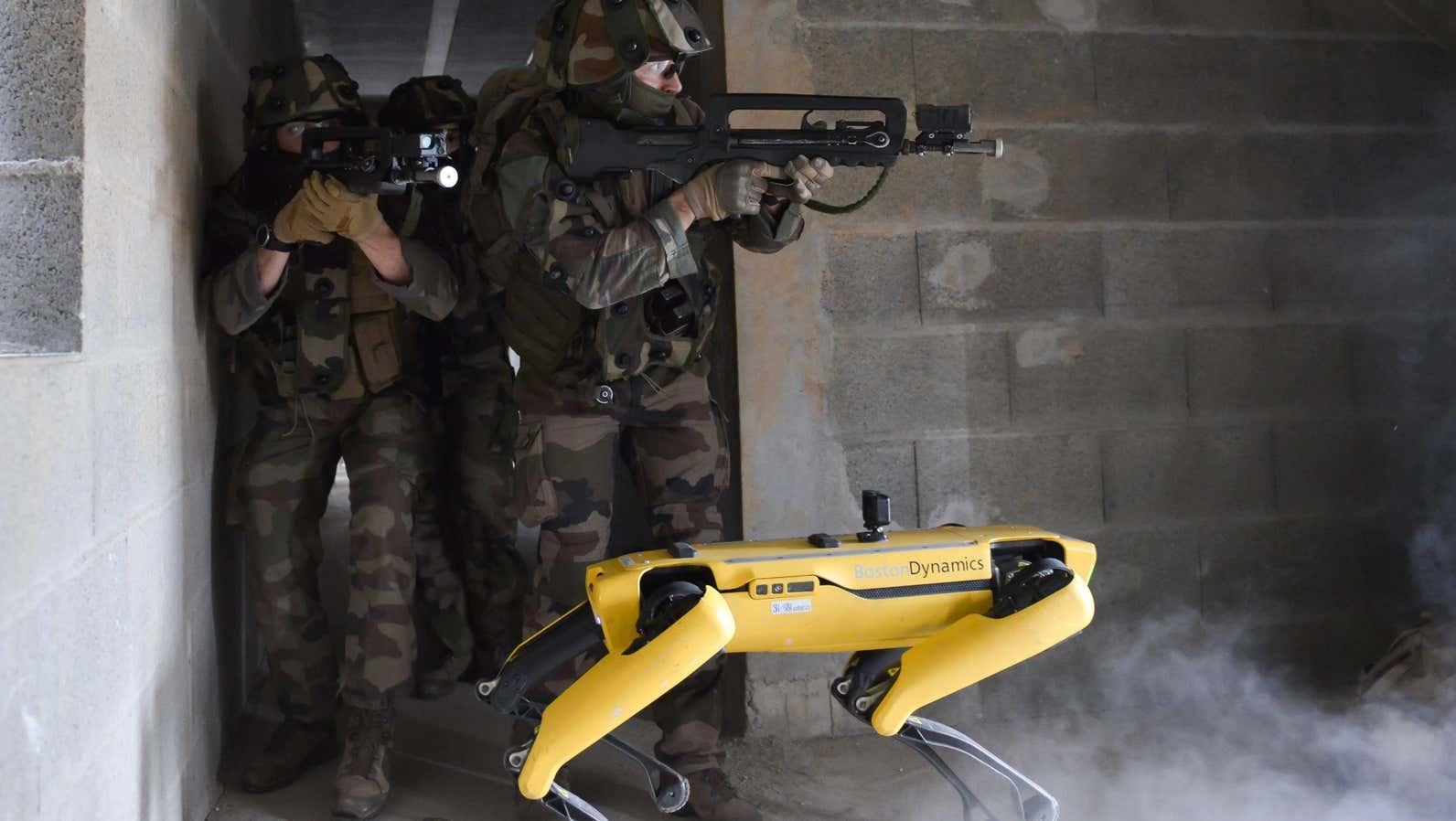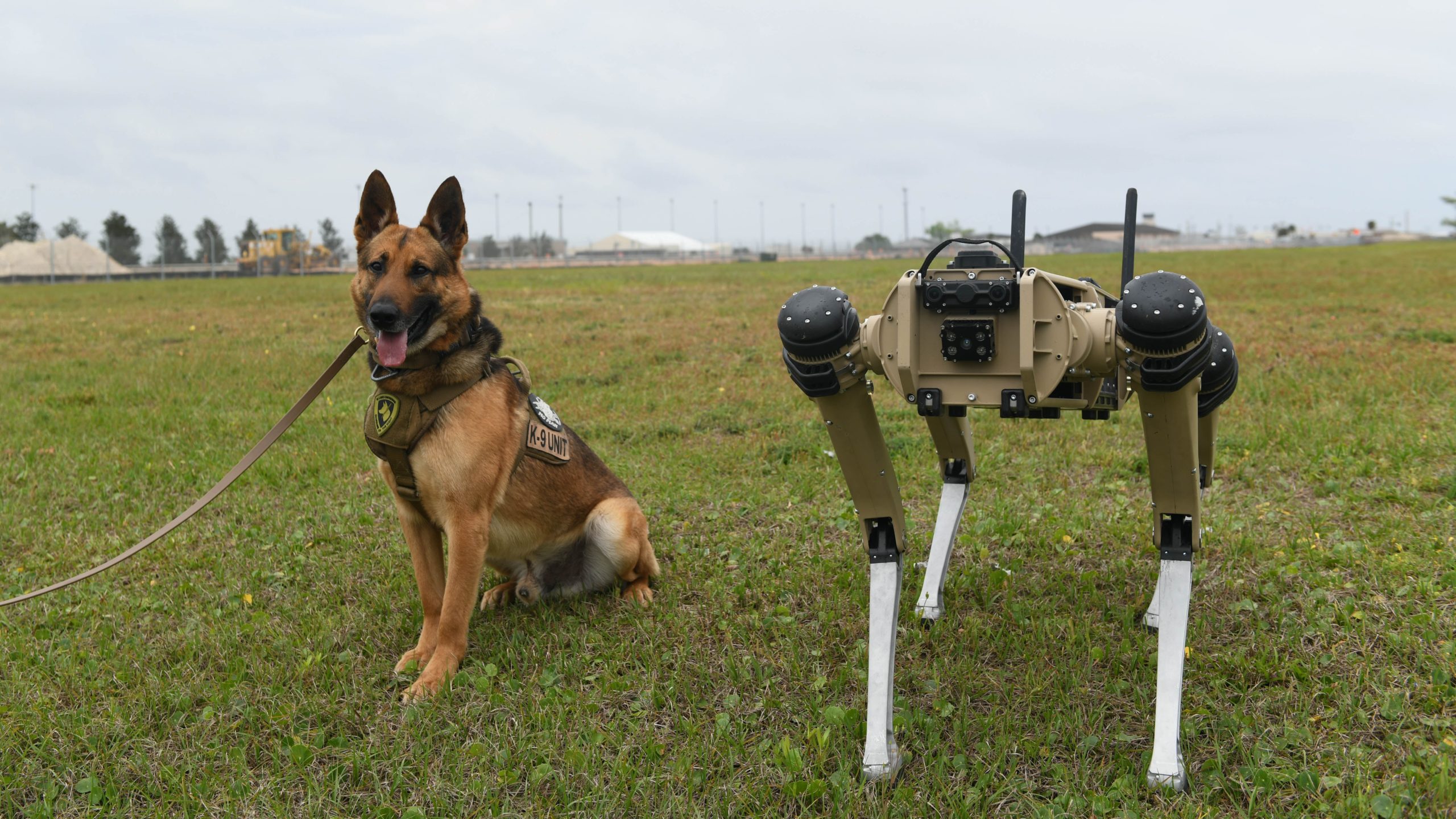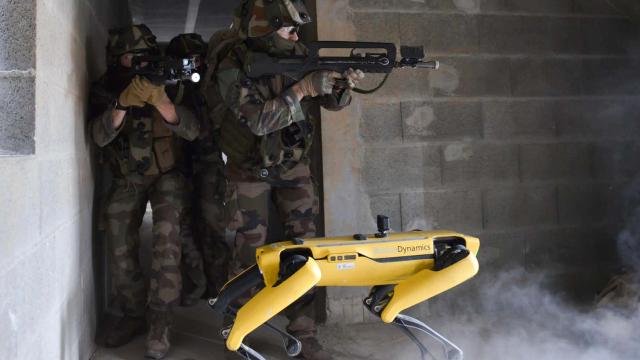Some things just don’t mesh well together. On their own, for example, dogs and robots are pleasant, sometimes even joyous additions to the human experience. When combined though, they can lead to dystopic results. Despite the uncomfortable optics, “robo-dogs” have experienced a resurgence in recent years, particularly among law enforcement agencies.
These quadruped robots have seen significant technological breakthroughs in recent years that allow them to operate in a variety of terrains and, in some cases, withstand extreme temperatures. And unlike humans, robotic dogs (usually equipped with cameras) don’t need to sleep or eat, which has made them ideal surveillance tools for law enforcement in search of roaming sentries. In other cases, police have experienced using robotic dogs to inspect bombs and enter dangerous buildings ahead of humans.
Outside of law enforcement applications, these dogs are also being used as monitoring tools at construction sites, train yards, and even to monitor radiation levels in Chernobyl. The global inspection robots market, of which robotic dogs play an increasingly prominent role, could be worth $US13.94 ($19) billion by the end of the decade, according to Allied Market Research.
Boston Dynamics and Ghost Robotics are leading the robotic dog push among law enforcement and have partnered with police forces spanning at least three continents. Scroll through to see which law enforcement agencies have embraced the Black Mirror imagery so far.
CBP is testing robo-dogs at the border
DHS and Border Patrol are working together to eventually deploy Ghost Robotic’s “dogs” on the border, in particular desert terrain.
Terminator dogs will supposedly act as a “force multiplier” for CBP in patrols and interdiction. https://t.co/rFp6ITp3Ak pic.twitter.com/ekgmb6Juih
— Jack Herrera (@jherrerx) February 2, 2022
Last week, the Department of Homeland Security issued a fluffy press release where it acknowledged its experimenting with dog-shaped “Automated Ground Surveillance Vehicles” to potentially one day roam the border. These robo-dogs, the agency says, could act as a mobile surveillance machine to “force-multiply the CBP presence.”
CBP worked with Ghost Robotics to create a custom-built, 45 kg robotic dog it says can traverse the border’s rugged landscape, endure extreme heat, and navigate through stairs and other human environments to function as an all-in-one surveillance juggernaut.
“We are trying to keep CBP and other government personnel in the field out of harm’s way,” Ghost Robotics CEO Jiren Parikh told Axios this week.
The DHS announcement drew the ire of rights groups like the Electronic Frontier Foundation, which recently called the Ghost Robotics machine a “ civil liberties-invading hellhound.” Sending robo-dogs to prance around the border threatens to further erode the rights of people living near the border, who the EFF referred to as some of the most highly surveilled in the United States.
Massachusetts pioneered U.S. police use
Massachusetts state police were the first law enforcement agency to publicly use Boston Dynamics’ Spot robot back in 2019, according to records obtained by the American Civil Liberties Union of Massachusetts. In a separate report, a police spokesperson told WBUR the state’s bomb squad had Spotted on loan for three months where it was used as a “mobile remote observation device.” Spot was apparently used in two “incidents’’ during that loan period.
Images obtained by WBUR show Spot opening a door with a type of claw attached above its “head.” Other footage shows the robots kicking their way through ice and attempting to balance on uneven terrain.
Spot didn’t exactly blow Massachusetts police away. According to emails obtained by OneZero, Spot annoyingly placed itself into “sit” mode during an investigation in which police were trying to get it to inspect a potential bomb. In another trial, Spot experienced “front leg panic,” before toppling to the ground. When faced with a steep incline, Spot reportedly got confused and started pacing in place.
NYPD was forced to abandon ‘digidog’

Boston Dynamic’s four-legged robot dog made a much more public appearance last spring when New York’s police department brought it along while responding to a domestic dispute possibly involving a firearm in a public housing unit. Though police say the robot, which it reportedly came to nickname, “Digidog,” did not play an active role in that operation, its presence on the scene ignited a debate around police use of the technology.
Nah they really got these robot police dogs in NYC. This is wild pic.twitter.com/iG7CTPFevH
— ً (@1800SPOILED) April 12, 2021
Not long after that poorly received event, the NYPD announced it would cut its $US94,000 ($130,491) contract with Boston Dynamics short by about three months. When all was said and done, the Department’s Deputy Commissioner for Intelligence and Counterterrorism said Spot had been used in the field six times over a little less than a year.
Honolulu Used Boston Dynamics’ Spot to Scan Homeless Population

In possibly the most dystopian example of robotic dogs used by law enforcement thus far, Honolulu police last year deployed Boston Dynamics’ Spot to patrol the city’s homeless encampment and take body temperatures of supposedly sick people.
The idea behind deploying Spot, Honolulu Police Department Deputy Chief John McCarthy told Honolulu Civil Beat, was to “mitigate the spread of COVID-19 through touchless field screening and interaction with homeless individuals in self-quarantine.” By using Spot, HPD could avoid potentially having to have police officers interact with people in the encampment who had tested positive. Aside from taking temperatures, Spot was also used to disinfect the site and remotely patrol the areas.
The police department reportedly used $US150,045 ($208,292) worth of CARES Act COVID-19 relief aid to pay for Spot.
The French army included Boston Dynamics’ Spot in trials

Spot was one among several robots shown off by the French military last year during a series of trials meant to demonstrate how robots can work alongside armed humans. Soldiers reportedly used Spot to conduct several reconnaissance tasks over a two-day trial.
Images of the operation show a small group of armed soldiers leading Spot through buildings. The tests weren’t perfect though. In one case, Spot reportedly ran out of battery and had to be carried out away from the test site. Bad dog!
Singapore used spot to enforce social distancing

Though the development and use of robotic dogs far precede the pandemic, sudden global lockdown orders and social distancing precautions presented an enticing new use case for the surveillance machines. One of the first and best examples of that was in Singapore in May 2020, when videos surfaced of Boston Dynamic’s Spot patrolling Bishan-Ang Mo Kio Park and using a speaker to alert park-goers to maintain social distance. Government officials at the time said they also used Spot’s cameras to estimate the total number of visitors in the park.
Robotic dogs will roam a U.S. military base

The U.S. military is also trying to get in on the action. Last March, the U.S. Air Force announced plans to bring dog-like robots developed by Ghost Robotics and Immersive Wisdom, to “add an extra level of protection to the base.” The robo-dogs, called Quad-legged Unmanned Ground Vehicles.
The robots are intended to patrol remote areas of the base to provide extra levels of security. In the press release, the military said they were attracted to the dogs due to their ability to operate in low temperatures and rough terrains. Those dogs also reportedly come equipped with a “crouch mode” that lets them squeeze through difficult-to-access areas.
Dutch Police Want to Use Robotic Dogs to Enter Drug Labs

Dutch police started using Boston Dynamics Spot in April last year primarily as a means to enter potentially dangerous drug labs. In an interview with Reuters, The Netherland’s Head of its Division for Special Operations said he hoped law enforcement could use Spot to conduct an “initial observation,” before sending in humans. Smith claimed the Dutch were the first police force to begin using Spot in Europe.
In a video, Dutch police demonstrate how they can remotely operate Spot to enter into buildings and scan the area. Officials claim Spot could one day enter crime scenes and take DNA samples.
